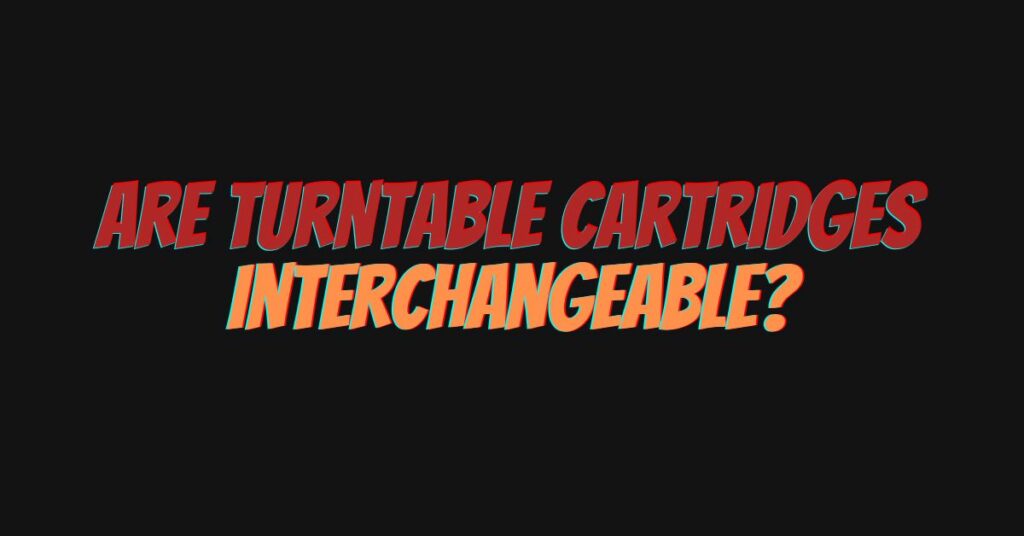Vinyl records have experienced a remarkable resurgence in recent years, attracting both long-time enthusiasts and a new generation of music lovers. A turntable cartridge is a key component in the vinyl playback system, but are they interchangeable? In this article, we will explore the compatibility and interchangeability of turntable cartridges and provide insights into the factors to consider when swapping cartridges.
Understanding Turntable Cartridges
A turntable cartridge is a vital component of a turntable, responsible for converting the physical grooves on a vinyl record into an electrical signal that can be amplified and played through speakers. Each cartridge consists of three primary elements:
1. Stylus (Needle): The stylus is the part of the cartridge that directly contacts the grooves of the record. It plays a pivotal role in tracking the grooves and translating the mechanical movements into electrical signals.
2. Cantilever: The cantilever is a thin rod that connects the stylus to the cartridge body. It serves to transmit vibrations from the stylus to the sensitive components inside the cartridge.
3. Cartridge Body: The cartridge body houses the internal components responsible for converting mechanical vibrations into electrical signals.
Interchangeability of Turntable Cartridges
The interchangeability of turntable cartridges depends on several factors:
1. Mounting Type: Turntable cartridges come in various mounting types, including standard (two-screw mount) and P-mount (four-pin plug-and-play). These are not interchangeable without the appropriate tonearm or adapter.
2. Cartridge Compatibility: Different turntables and tonearms are designed to accommodate specific types of cartridges. For example, some tonearms are designed for moving magnet (MM) cartridges, while others are better suited for moving coil (MC) cartridges. Changing from one type to the other may require adjustments or component replacements.
3. Tracking Force: The stylus’s tracking force, which is the downward pressure it exerts on the record’s grooves, is critical for proper playback. Different cartridges have specific tracking force requirements, and adjusting it may be necessary when swapping cartridges.
4. Cartridge Alignment: The alignment of the cartridge in the tonearm headshell is crucial for accurate tracking and sound quality. If you change cartridges, you may need to align the new one properly.
5. Phono Preamp Settings: The type of cartridge you use may affect the settings on your phono preamp, especially if you switch between MM and MC cartridges, which have different output levels and impedance characteristics.
6. Headshell and Cartridge Leads: Ensure that the headshell on your turntable can accommodate the new cartridge, and check if you need different cartridge leads for wiring.
Factors to Consider When Swapping Cartridges
When considering swapping a turntable cartridge, here are some key factors to keep in mind:
1. Cartridge Type: Determine whether you want to stick with the same type of cartridge (MM or MC) or switch to a different one. This may require adjustments to your turntable setup.
2. Compatibility: Verify that the new cartridge is compatible with your tonearm and turntable. Consult the manufacturer’s specifications and recommendations.
3. Alignment: Pay close attention to cartridge alignment. Proper alignment is essential for minimizing wear on your records and achieving optimal sound quality.
4. Tracking Force: Adjust the tracking force to match the new cartridge’s requirements. Incorrect tracking force can lead to groove damage and poor sound quality.
5. Phono Preamp Settings: Be prepared to adjust your phono preamp’s settings, such as gain, to accommodate the new cartridge’s output characteristics.
Conclusion
While turntable cartridges can be interchangeable, there are several considerations that must be taken into account. The compatibility of cartridges depends on mounting type, cartridge type (MM or MC), tonearm design, and adjustments to tracking force and alignment. Swapping cartridges is certainly possible, but it requires careful planning and adjustments to ensure that your vinyl records are treated with the care and precision they deserve. Ultimately, the goal is to enjoy your vinyl collection with the best possible sound quality and the assurance that your records will remain in excellent condition.


